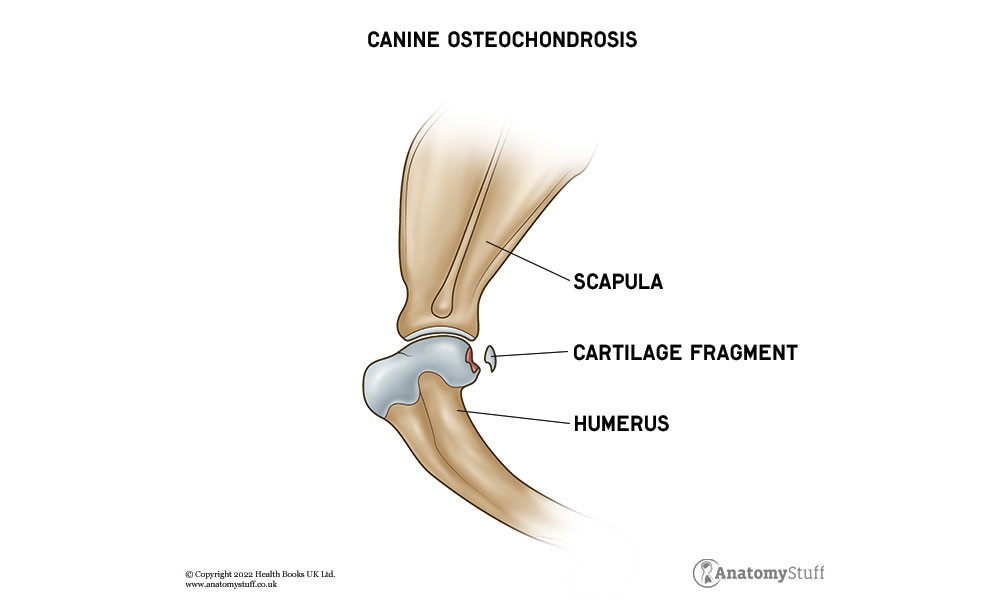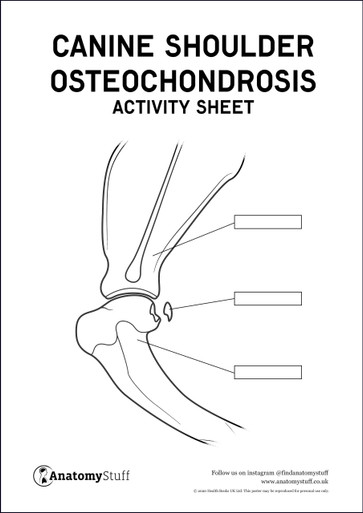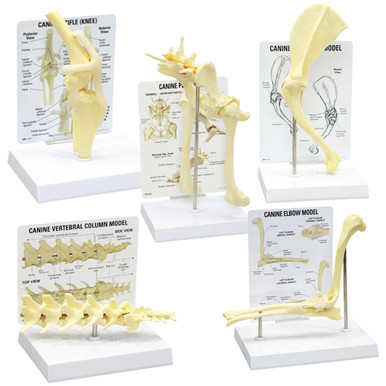Canine Joint Pathologies
Various joint pathologies can affect canines. Joint diseases can affect how a dog distributes their weight and may cause pain, limping and avoidance of using their limb for walking.
Here are some of the more common canine joint pathologies.
Osteochondrosis
This condition occurs when the cartilage abnormally develops on the surface of the bone. As a result, the cartilage separates from the bone and often occurs in the elbow, the knee, or the shoulder. This condition typically affects large breed young dogs who are undergoing rapid growth. Symptoms of this condition include limping or the dog being unable to place weight on the affected joint. The joint may also be swollen and warm, which is a sign of inflammation.
Elbow Dysplasia
Elbow dysplasia occurs when there are abnormalities in the elbow joint development. When the three bones of the elbow do not develop properly, weight distribution on the joint can cause pain and even the development of arthritis. This condition is inherited and is often seen in large breed dogs. Symptoms typically develop at a young age, and the dog will not want to exercise or complete a walk.
Legg-Calve Perthes Disease
Legg-Calve Perthes Disease is a form of avascular necrosis. This is a condition where the head of the femur deteriorates due to disrupted blood supply to the bone. As the bone deteriorates, small fractures begin to develop, causing further weakness within the bone. This condition can eventually lead to arthritis as the joints deteriorate, becoming even weaker. Symptoms include pain in the hip joint, and dogs may also lose muscle mass around the hip. This condition typically occurs in small dogs.
Displacement of the Knee
This condition occurs when the kneecap moves outside of its normal position. This can happen due to trauma, or it can be congenital. As a result, the tibia can become rotated depending on the direction of the displaced patella. Dogs may present with a skipped step when walking and difficulty applying weight to the affected leg. This condition typically occurs in small dogs.
Osteoarthritis
Osteoarthritis (OA) in dogs is common. OA is a joint disease where the joint begins to deteriorate, with loss of cartilage, causing more friction between joints. This condition can form a secondary disease such as elbow dysplasia, patella displacement, and ligament damage. Symptoms include avoiding exercise, inability to jump and a compromised gait.
Septic Arthritis
Septic arthritis occurs when an infection is present in the joints, which causes an inflammatory response. This can be caused by bacteria being introduced into the joint during a traumatic injury or after surgery. This type of arthritis is common in large breed dogs. Symptoms include swelling pain, and the joint will be warm to the touch.
Rheumatoid Arthritis
Rheumatoid arthritis is an autoimmune disease where the body attacks itself, affecting the joints and leading to joint degeneration. The immune system will view certain body parts as foreign and produces antibodies known as rheumatoid factors, which cause an immune response. This includes inflammation, swelling, and deterioration of the cartilage in the joints.
















